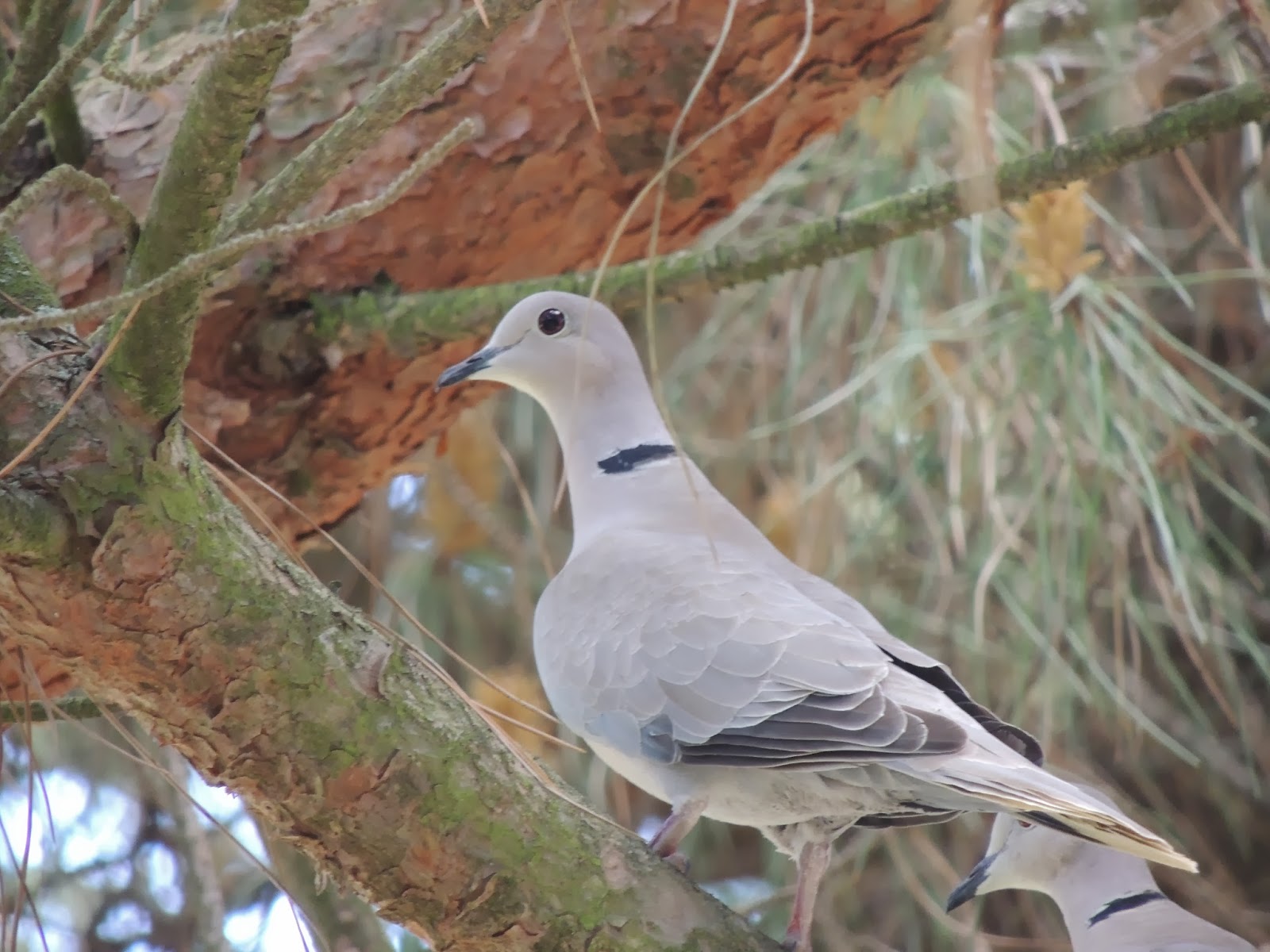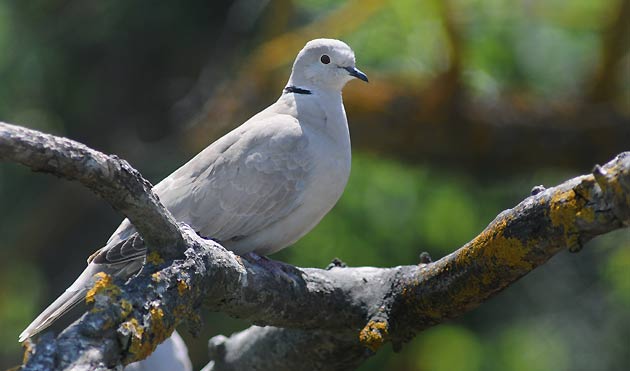The Eurasian collared dove (Streptopelia decaocto), most often simply called the collared dove, also sometimes hyphenated as
Eurasian collared-dove, is a species of dove native to warm temperate and subtropical Asia, and introduced in North America
in the 1980s. In the latter half of the 20th century the species native range vastly expanded, and it can now be found from
Southeast Asia through to Western Europe.
Description
Collared doves are sometimes kept in aviculture, and form strong relationships with each other.
The genus name Streptopelia is from Ancient Greek streptos, "collar" and peleia, "dove". The specific decaocto is a
latinisation of the Greek word for "eighteen", from deca, "ten", and octo, "eight". In Greek mythology, a servant
complained bitterly about pay of just 18 pieces a year, and the gods changed her to a dove that still cries mournfully.
It is a medium-sized dove, distinctly smaller than the wood pigeon, similar in length to a rock pigeon but slimmer and
longer-tailed, and slightly larger than the related turtle dove, with an average length of 32 cm (13 in) from tip of beak to
tip of tail, with a wingspan of 47–55 cm (19–22 in), and a weight of 125–240 g (4.4–8.5 oz). It is grey-buff to pinkish-grey
overall, a little darker above than below, with a blue-grey under wing patch. The tail feathers are grey-buff above, and
dark grey tipped white below; the outer tail feathers also tipped whitish above. It has a black half-collar edged with white
on its nape from which it gets its name. The short legs are red and the bill is black. The iris is red, but from a distance
the eyes appear to be black, as the pupil is relatively large and only a narrow rim of reddish-brown iris can be seen around
the black pupil. The eye is surrounded by a small area of bare skin, which is either white or yellow. The two sexes are
virtually indistinguishable; juveniles differ in having a poorly developed collar, and a brown iris.
The collared dove is not migratory, but is strongly dispersive. Over the last century, it has been one of the great
colonisers of the bird world, travelling far beyond its native range to colonise colder countries, becoming a permanent
resident in several. Its original range at the end of the 19th century was warm temperate and subtropical Asia from Turkey
east to southern China and south through India to Sri Lanka. In 1838 it was reported in Bulgaria, but not until the 20th
century did it expand across Europe, appearing in parts of the Balkans between 1900–1920, and then spreading rapidly
northwest, reaching Germany in 1945, Great Britain by 1953 (breeding for the first time in 1956), Ireland in 1959, and the
Faroe Islands in the early 1970s. Subsequent spread was "sideways" from this fast northwest spread, reaching northeast to
north of the Arctic Circle in Norway and east to the Ural Mountains in Russia, and southwest to the Canary Islands and
northern Africa from Morocco to Egypt, by the end of the 20th century. In the east of its range, it has also spread
northeast to most of central and northern China, and locally (probably introduced) in Japan. It has also reached Iceland as
a vagrant (41 records up to 2006), but has not colonised successfully there.






